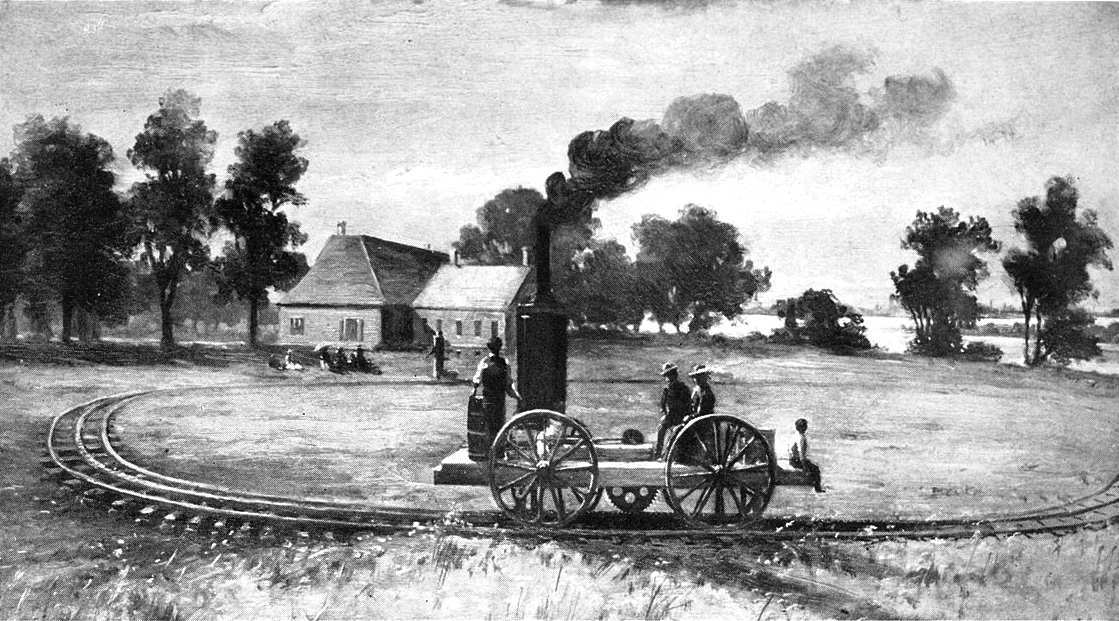John Stevens, Father of the American Railroad

The first American locomotive on rails at Castle Point, Hoboken
|
John Stevens, a Continental Army Colonel, practical engineer and inventor was an extremely early proponent railroads in America. In 1812 he wrote Documents tending to prove the superior advantages of rail-ways and steam-carriages over canal navigation urging the construction of a railroad to connect the Great Lakes with the Hudson River
instead of the Erie Canal.
The only railroads of the time consisted of horse-drawn carriages, extending short distances mostly connecting coal mines with canals. In the pamphlet Stevens devised steam powered locomotives, trains (which he referred to as suits) and their potential speed of 40 to 50 miles per hour.
He also foresaw railroads as a way to strengthen and unite the young United States:
|
|
|
“to embrace and unite every section of this extensive empire. It might then indeed be truly said that these States would constitute one family, intimately connected, and held together in indissoluble bonds of union.”
|
|
|
|
Despite being met with pity and scorn, the pamphlet has been called “the birth certificate of all railroads in the United States.”
In 1815 he obtained the first railroad charter in the United States for the New Jersey Railroad Company, to build a railroad from Trenton to New Brunswick, New Jersey Unable to attract investment the line was not built (Stevens’ son Robert L. Steven’s eventually built the Camden and Amboy Rail Road on this path in the 1830s. It is currently the route of Amtrak’s Northeast Corridor).
In 1825 on the grounds of his estate in Hoboken, New Jersey, Stevens built an experimental “Steam-waggon”, first steam locomotive in the United States.
Guests were delighted to ride at six miles per hour on “the circle at the Hoboken Hotel.”2
"Stevens' Steam Waggon served a dual purpose, attracting visitors to Hoboken and demonstrating steam traction. It was the first steam locomotive to operate on a track in America and the first locomotive built with a horizontal cylinder."1
Although Stevens's locomotive never entered commercial service, the fact that it predated Peter Cooper's Tom Thumb by five years makes Stevens the true "father of the railroad in America."
"Among the visitors to Stevens' estate was John Jervis of the Delaware & Hudson Canal Company. Subsequently, in 1829, the D&H built a nine mile section of track to connect its canal with coal mines that it owned. To pull the coal cars, the company ordered two locomotives from England, one of which was the famous Stourbridge Lion."1
|
1John Stevens: The Man and the Machine, by James Alexander Jr., a review of an early American railroad visionary.
2All Aboard! Railroads and New Jersey 1812-1930
Links:
"Stevens Locomotive," in Stevens Digital Collections, Item #578
The first American locomotive on rails at Castle Point, Hoboken. Rutgers University. Libraries. Special Collections

